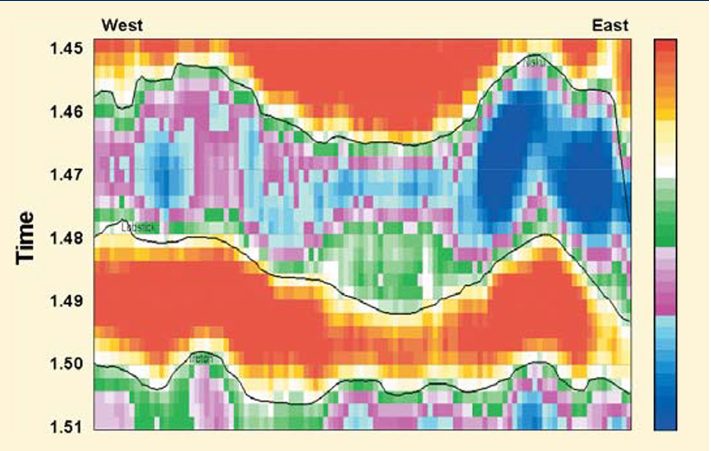In this month’s article, John Pendrel discusses various techniques which make Seismic Inversion the best tool for reservoir characterisation. Despite the article being written over 20 years ago, all the scientific principles still hold true for today, showing that our computing power and graphical capabilities are obviously much improved over that time.
Today, you can leverage a number of different methods and software products to perform seismic inversion. Thus, maximising the value of your seismic data. Primarily, this process is undertaken to transform seismic reflection data into a quantitative rock property, describing the reservoir accordingly. i.e. you can read between the lines of the seismic reflection data, which improves the interpretability of the seismic volume.
By computing a post-stack inversion, you can generate both relative and absolute acoustic impedance volumes. These products are very useful as a starting point, as they provide contrast between high impedance and low impedance signatures within your data, where the low impedance values can relate to the presence of hydrocarbons against the background geology. However, the limitation of these products is that you are unable to discern the difference between a brine filled reservoir and a sand body full of oil.
Performing a pre-stack inversion utilises shear wave data to provide an extra dimension to what we can plot. Rather than operating on a single axis from low to high, pre-stack calculations are performed on two axes, such that the gas, oil and brine can be separated from one another and contrasted against the surrounding rock.
Our Inversion Techniques
We utilise Colored Inversion, Simulated Annealing and Extended Elastic Impedance algorithms as part of Kingdom Seismic Inversion, to perform both post-stack and pre-stack inversion. As the article mentions, “the time parameter can be strongly non-linear, and the result is a much more complicated solution space which may necessitate the use of a simulated annealing algorithm to come to a meaningful solution”. The other aspect of this algorithm is that it is both model and well independent, and so creates a high-resolution output which is free from human bias.
We hope you enjoy reading about the whole range of different inversion methods discussed in the article. If you’re a seasoned geophysicist and you have time to write an article in the fields of depth conversion or seismic inversion, to help the wider geoscience community, then please get in touch here.

